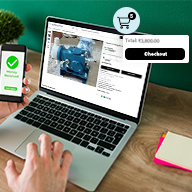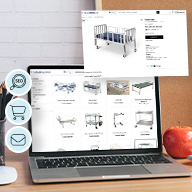How to protect your brand from identity theft?

Branding & PR
292 week ago — 8 min read
With a major chunk of a consumer base shifting to online shopping, many businesses have hopped on to the e-commerce bandwagon to make the most of this opportunity. And truly, having an online brand is essential for businesses to remain relevant in today’s competitive market. Further, it is vital to protect your brand from online brand identity theft. Wondering what that is? Then this post is for you.
In this article, I will cover:
- What is brand identity theft?
- The common brand identity thefts you should be aware of.
- Ways to protect your brand from identity theft.
Read on…
Brand identity theft?
Identity theft or identity fraud is the process of using your personal information such as your name, identity proof and contact number without your permission, to commit a crime. In businesses that have a visible online brand identity, this translates to brand identity theft. Brand identity is a very important aspect of any business because your brand helps build your value by connecting you to your customers. Hence, it is important to protect it.
An example of brand identity theft is that of ExxonMobile, an American multinational oil and gas corporation headquartered in Irving, Texas. A Twitter account (@ExxonMobilCorp) was set up in 2008 claiming to be the face and voice of the company. It was later found out that the identity was a fake one.
Types of brand identity thefts you must know about
Fraudsters can easily replicate your brand to create a fake one that looks exactly like yours. They can even go to the extent of creating fake social media accounts and interacting with your customers claiming to be the voice and face of your brand. There are four major areas of your brand that your customers associate with. They are:
- Brand communication - the language and style of communication
- Vendor characteristics - vendor interaction
- Site design - look and feel of a website
- Product characteristics - authenticity of the products
Fraudsters hit on these crucial points and try and replicate each of them to confuse a customer into buying duplicate products. It is usually difficult for a buyer to differentiate between the fake and the original one as the fake one can very easily emerge on top of their search results and they can unknowingly end up purchasing products from there.
Also read: How does color affect your branding?
The following are the common ways in which fraudsters and scammers can harm your brand identity:
1. Traffic diversion
A clever way to create a digression using a brand name similar to yours, whereby Google confuses between the two and ends up showing the duplicate brand first in search results. For example, your brand name is Monvelli, and scammers start a duplicate brand with an extra ‘i’. Now when buyers are looking for your product online, Monvellii could come up instead of Monvelli. The customer might be unaware of this slight difference and may end up purchasing products from a duplicate site.
2. Manipulating SEO
SEO manipulation is the dark side of SEO that encourages fraud and scams. A person can easily try to insert your brand’s name or tag line into the header, meta tags or inside some HTML code to rank higher in search results. This is considered as SEO manipulation.
3. Counterfeiting
Counterfeiters can cause serious trouble for brands that are authentic. Counterfeiting or forgery is the process of creating duplicate goods and products of your brand by labeling them as ‘first copy’, ‘refurbished’ etc. and selling them in cheaper prices. This way authentic brands lose their sales as customers can hardly make out the difference between the original and fake copy and end up purchasing the cheaper version. In addition to losing their sales, brands also lose their reputation.
4. Grey market goods
Grey market goods are products that are stolen and then refurbished and resold as new. It takes an eagle’s eye to be able to spot the difference between these and the authentic products. The goods don’t come with a guarantee and thus when the need for repair arises, customers are left disturbed.
5. Defaming your brand and phishing scams
In brand defamation, people are hired and paid to defame your brand. One classic example is by posting bad reviews of products on online websites. Phishing scams are emails that look official but contain graphics stolen from a brand. Remember mails that go into your spam folder? They are great examples of phishing scams.
Also read: Use your email signature as a powerful marketing tool
Now that you know what common brand identity thefts are, let’s look at how you can protect your brand from identity theft:
Trademark registration
Trademark offers the best kind of security for your brand. You can protect your business logo or name by legally registering a trademark for your brand. It may take a year or two to get your trademark registered but till then you can use an unregistered trademark within the geographical area you operate.
Verified social accounts
Social pages that actually belong to a brand have to verified. Instagram uses a blue tick mark against the business profile to differentiate the verified account from the non-verified ones. Similarly, all other social media platforms use different verification processes that you as an n authentic brand need to follow.
Consistent use of your logo
Repeatedly using your logo creates a recall value for your brand. Logos have a huge visual impact on customers and hence it makes sense to use a single impactful logo for your brand so that people can easily recognise it. Think of Nike or Apple?
And if you have more than one version of the same logo, you can define which products need to be stamped with which logo. This will prevent brand theft as your customers know the original logo by heart.
Strong brand presence
The harder you work towards creating a strong brand presence, the harder it gets for fraudsters to attempt a forgery. Think of Starbucks. A person trying to sell coffee under Starbucks’ trade name would have to think twice before doing it because customers who use its authentic products are well aware of its quality and taste.
Take immediate action
Whenever you sense an infringement, take immediate action to curb it. Every country follows different IP laws and it’s important to fully understand the law in your own land if you want to prepare for the battle ahead.
Protecting your brand from theft is as important as building and scaling it. Protect your brand from identity theft by keeping the above points in mind.
Also read: Build the biggest and longest lasting brand – YOU
Image courtesy: shutterstock.com
To explore business opportunities, link with me by clicking on the 'Connect' button on my eBiz Card.
Disclaimer: The views and opinions expressed in this article are those of the author and do not necessarily reflect the views, official policy or position of GlobalLinker.
Posted by
GlobalLinker StaffWe are a team of experienced industry professionals committed to sharing our knowledge and skills with small & medium enterprises.
Network with SMEs mentioned in this article
View GlobalLinker 's profile
Most read this week
Trending
Ecommerce 1 week ago














Comments (1)
Share this content
Please login or Register to join the discussion